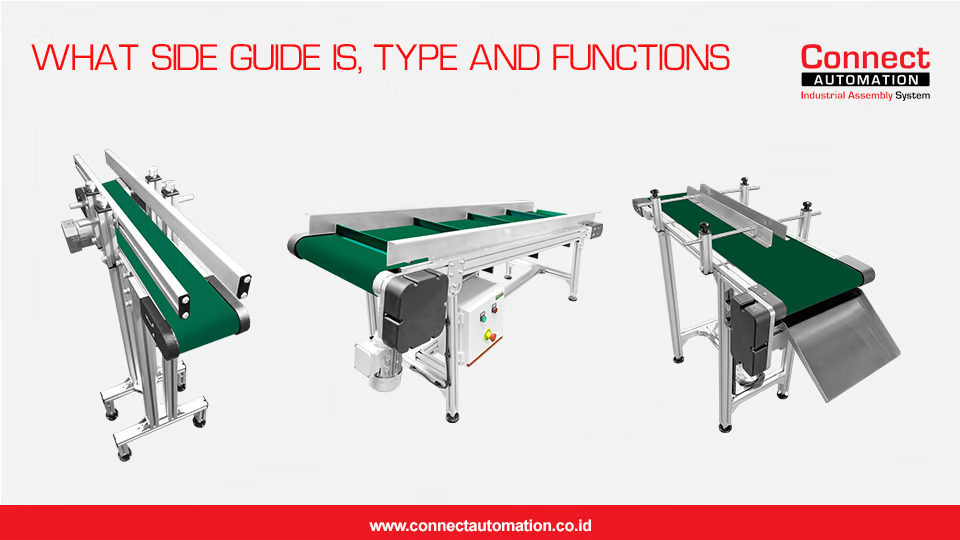What Side Guide Is, Type and Functions Of A Side Guide

A conveyor side guide is an accessory that can be added to a conveyor in order to act as a safety net. This side guide helps to keep products from slipping and falling off of the conveyor.
Conveyor side guides are especially helpful in situations where the conveyor belt is moving at high speeds. By keeping the products firmly in place on the belt, the side guide helps to prevent accidents.
There are a few different types of conveyor side guides available on the market. The most common type is the static side guide. This type of side guide is attached to the conveyor frame and does not move.
Another type of conveyor side guide is the dynamic side guide or sometimes called side walls (as it forms a wall along the sides of the belt). This type of side guide is attached to the conveyor belt and moves along with the belt.
No matter which type of conveyor side guide you choose, you can be sure that it will help to keep your products safe from falling off of the conveyor.
If you have a conveyor belt in your facility, chances are you also have a side guide. Side guides are an important conveyor accessory, acting as a safety net to prevent products from slipping off the conveyor and falling to the floor.
When selecting a side guide, it is important to consider the width of the conveyor belt and the type of products that will be conveyed on the belt. For example, if you are conveying fragile products, you will need to choose a side guide that will prevent the products from being damaged as they slide off the conveyor belt.
If you are conveying heavy products, you will need to choose a side guide that can support the weight of the products. You will also need to consider the clearance between the side guide and the conveyor belt. This clearance should be small enough to prevent the products from falling off the conveyor belt, but large enough to allow the products to slide off the conveyor belt easily.
Connect Automation specializes in providing automation solutions, including conveyor systems, to improve efficiency across various industries. The company delivers cutting-edge technology to help organizations automate tasks and optimize workflows. Connect Automation helps businesses reduce manual efforts, boost productivity, and achieve better outcomes. With a customer-focused approach, the company designs tailored solutions to ensure smooth and effective automation transitions for long-term success.
Kawasan Industri Jababeka Tahap 1, Jl. Jababeka II D Blok C14L Cikarang, Indonesia (17530)
(021) 893 5060 Google Maps
Rungkut Industri III, No. 37, Rungkut Menanggal, Kec. Gn. Anyar Surabaya, Indonesia (60293)
(031) 9985 8624 Google Maps
